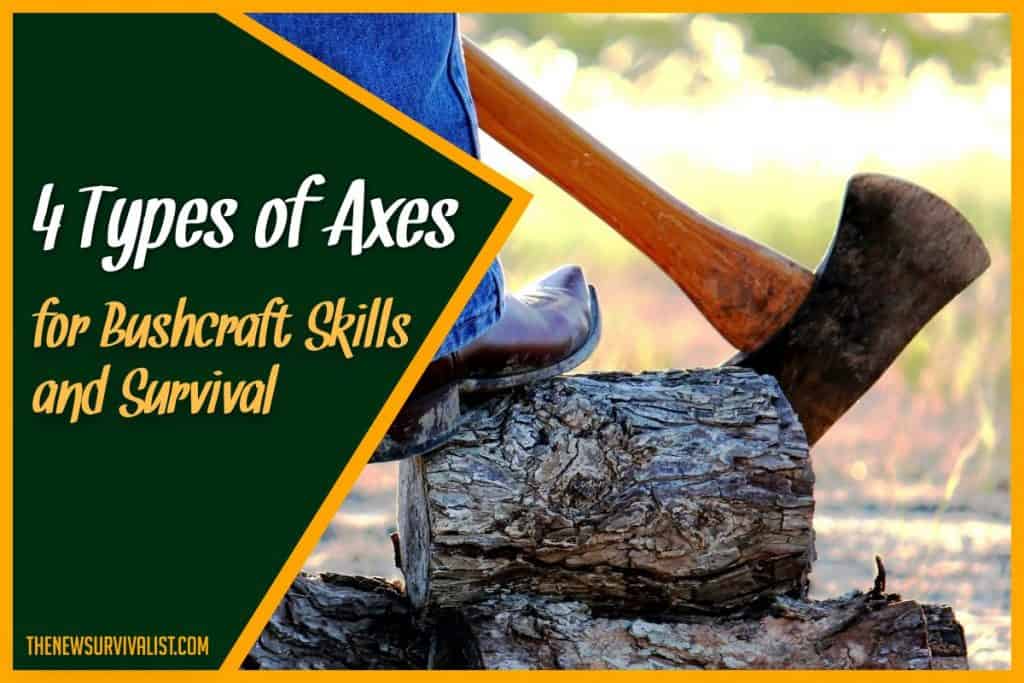Axes are an indispensable tool for preppers and survivalists. It comes in various lengths, sizes, and weights. Depending on the task at hand, there’s an appropriate type that should be used to make the job easier.
There’s a wide variety of axes with overlapping names and functions. In general, there are 4 types of axes categorized based on the purpose they excel on.
- Felling Axe: Chops down trees
- Splitting Axe and Splitting Mauls: Splits logs
- Carpentry Axes: Carving logs and woodworking
- Multi-purpose Axes: Usually short and light, and all-around axe.
This does not mean these types can’t be used interchangeably to perform other tasks. They can, but it would be inefficient to do so. In this article, we’ll discuss the different types of axes and how to select the most appropriate one for a given task.
Parts of an Axe
Steel Head/Bit
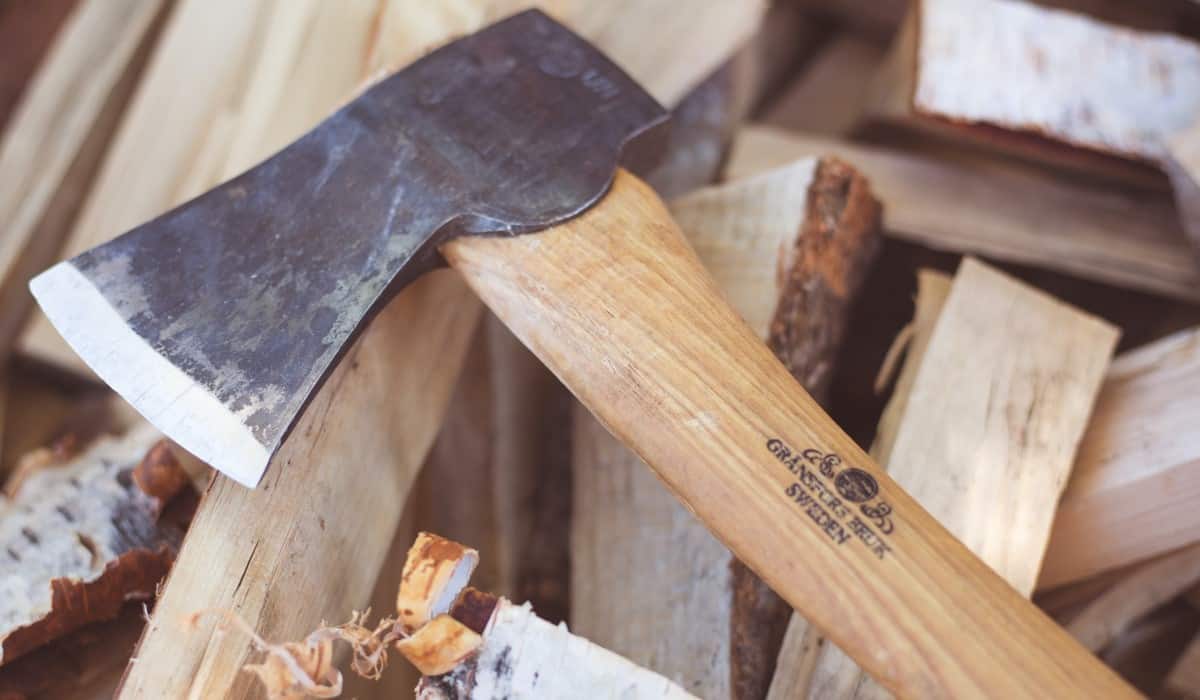
The axe head/bit is made of a metal with an edge that’s either sharp or blunt. The edge is hardened steel which makes it more effective and durable when chopping or splitting wood. The rest of the bit is usually non-hardened to absorb some of the impact and prevents the axe head from fragmenting or completely shattering. Moreover, a softer body will prevent cracking at the eye, which is the hole where the handle inserts.
The two side surfaces of the axe are called the cheeks. Its shape and thickness differ slightly depending on the type of axe. Felling axes will have slenderer, knife-like cheeks. Splitting axes on the other hand have thicker cheeks that turn the axe into a wedge which makes it more efficient in splitting logs.
With the axe held upright, the tip of the bottom edge is called the heel. A significant protrusion downwards of the bottom edge of the axe blade is called a beard. It can be seen on hewing axes, bearded axes, and tomahawks.
At the back of the bit is the poll. This part is often left flat, but some multi-purpose axe sports a modified poll which can include a spike or a hammer. An important thing to remember is that for most axes, the poll part is often non-hardened steel and should not be used as a striking tool. Doing so can damage the axe’s eye and loosen the handle.
Handle
The axe handle is also called the haft. It comes in different lengths from 9.4 inches up to 35.4 inches (24 – 90 cm). Handles can be made from wood, steel, fiberglass, aluminum, and carbon fiber.
Handles also vary in shape. Smaller multi-purpose axes with wooden handles often have a belly (a wider portion) below the bit, which makes it easier to choke the axe and use it for carving or detailed works. Tomahawks on the other hand have a straight handle that becomes wider at the top. Felling axes and splitting axes almost always have a swell at the bottom end of the haft that makes it easier to hold on to the handle when swinging the axe.
Types of Axes
-
Felling Axe
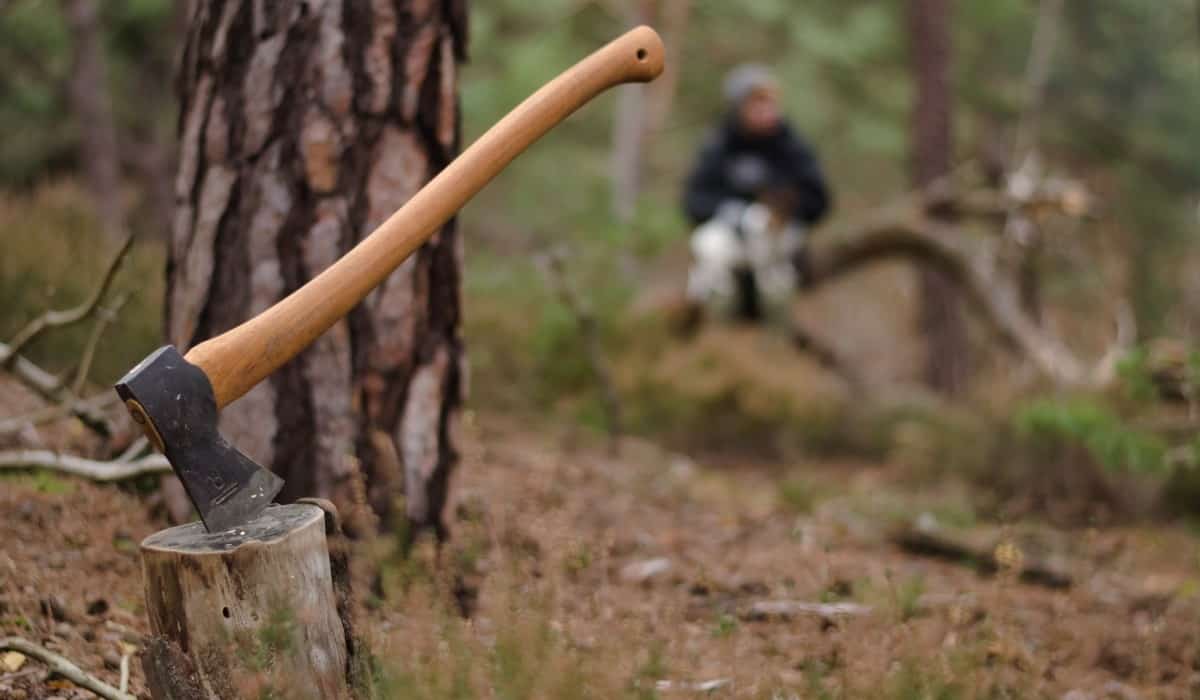
Felling axes can chop down moderately-sized to large trees more efficiently than other types of axes. This type has a long handle and a sharp thin edge. Its steelhead is also lighter compared to splitting axes, and weighs around 2 to 5 lbs. (0.9 to 2.2kg).
Its long handle and its relatively light weight make it easy to swing the axe sideways when chopping down a tree. The thin sharp blade is designed to cut against the grain of the wood, which makes it easy to take out chunks of wood for easier logging.
However, it’s a specialized type of axe and mostly excels for cutting down trees. It can be used for splitting logs, but its thinner bit profile and sharp edge readily dig along the grains of the wood and will easily get stuck. Its larger size and weight make it almost impossible to use for field dressing games and cooking.
-
Splitting Axe and Splitting Mauls
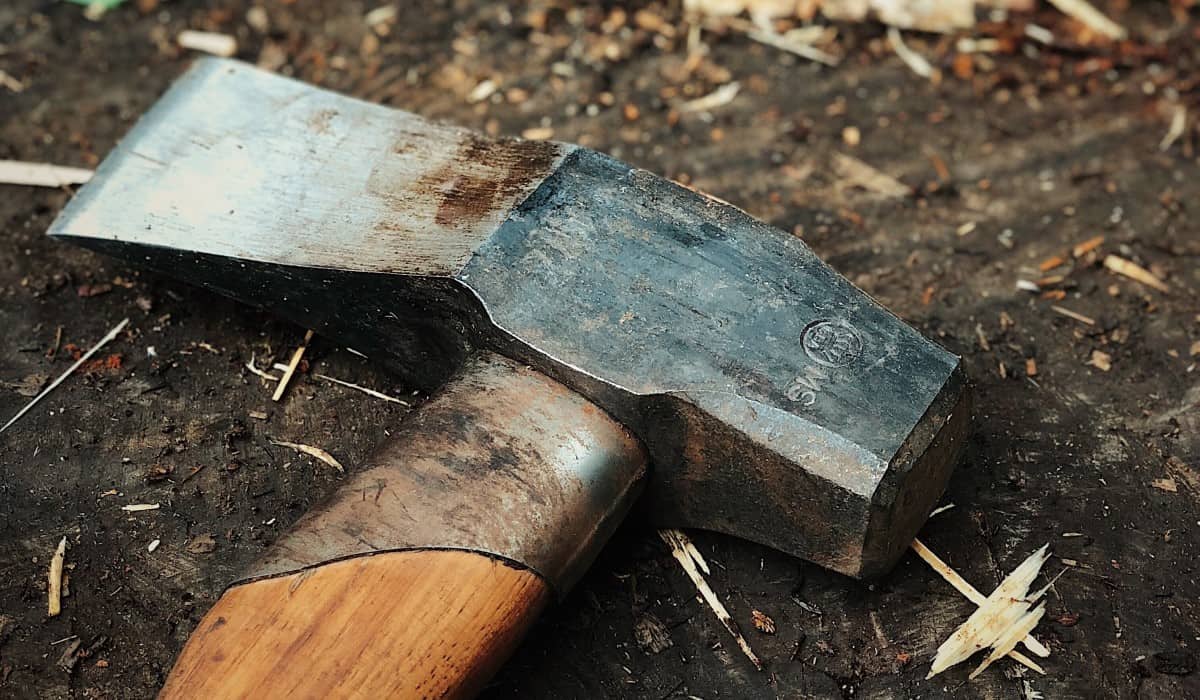
These types of axes have a heavy, wedged shape steelhead and a long handle. Unlike the felling axe, its bladed edge is dull which prevents it from digging too deep into the wood. They split wood along its grain, making use of their wedge shape to break apart a log along its fibers. The splitting axe can weigh anywhere from 3 to 6 lbs. (1.3 to 2.7 kg), while a splitting maul can weigh up to 6 to 8 lbs. (2.7 to 3.6kg).
The splitting maul’s poll is reinforced and can be hit with a hammer/mallet if the bit gets stuck on wood. Unfortunately, these types of axes cannot be used efficiently for logging, due to their heavy weight and dull blade.
-
Carpentry Axes
Carpentry axes are tools that are mostly used to process logs into lumber/timber or used in woodworking projects in the wild. Some examples are a broad axe/hewing axe, and a roofing axe.
a. Broad Axe aka Hewing Axe
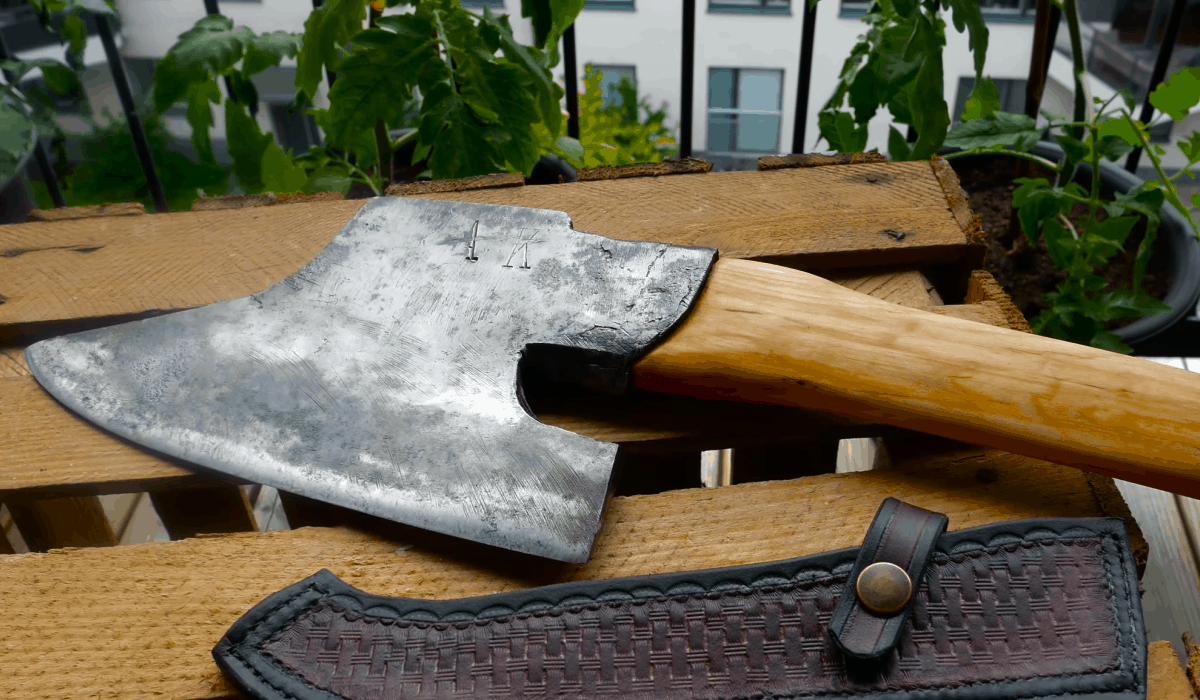
The broad axe has a long beard (the lower extension of the bladed edge), which extends its cutting edge. The increased length of its bladed edge makes it easier and faster to carve logs and turn them into long pieces of lumber, in a process called hewing. It can weigh up to 4 to 7lbs. (1.8 to 3.2) and the handle can range from 15 to 48 inches (38 to 122 cm).
b. Roofing Axe
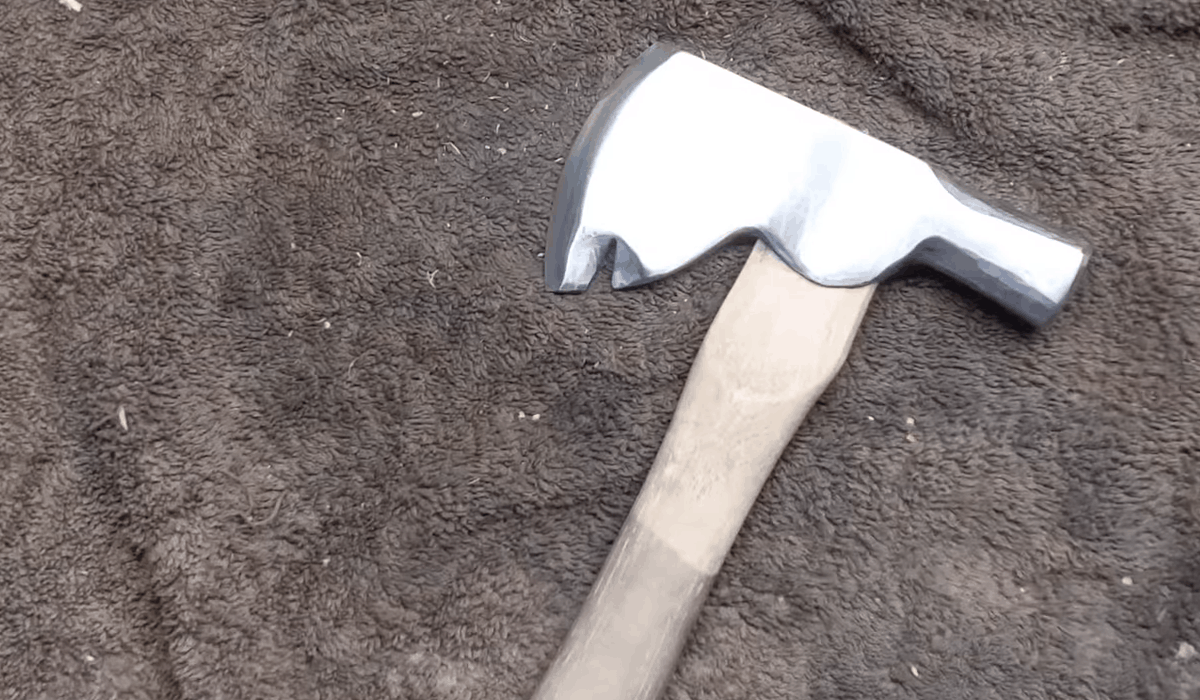
A roofing axe is also known as a roofing hatchet. It’s a one-handed tool and is small and light enough to be used while on top of unstable surfaces. Its bit is thinner than a regular axe, and its poll is a hammer. Additionally, it has a notch at the bottom surface of the axe head which is used to pull out nails.
-
Multi-Purpose Axes
Other types of small to medium-sized axes that are not mentioned above often fall in this category. These axes are more versatile and can be used in crude tasks like cutting branches, clearing a path, cutting kindling, breaking down animal bones and more.
Furthermore, these kinds of axes are small enough to be used as a substitute for a survival knife or a hunting knife. It can be used for finer works that requires more control and finesse like taking out a game’s intestine or carving wood into furniture.
Some examples are one-hand axes, tomahawks, hatchets and survival axes.
a. One-Hand Axes and Hatchets
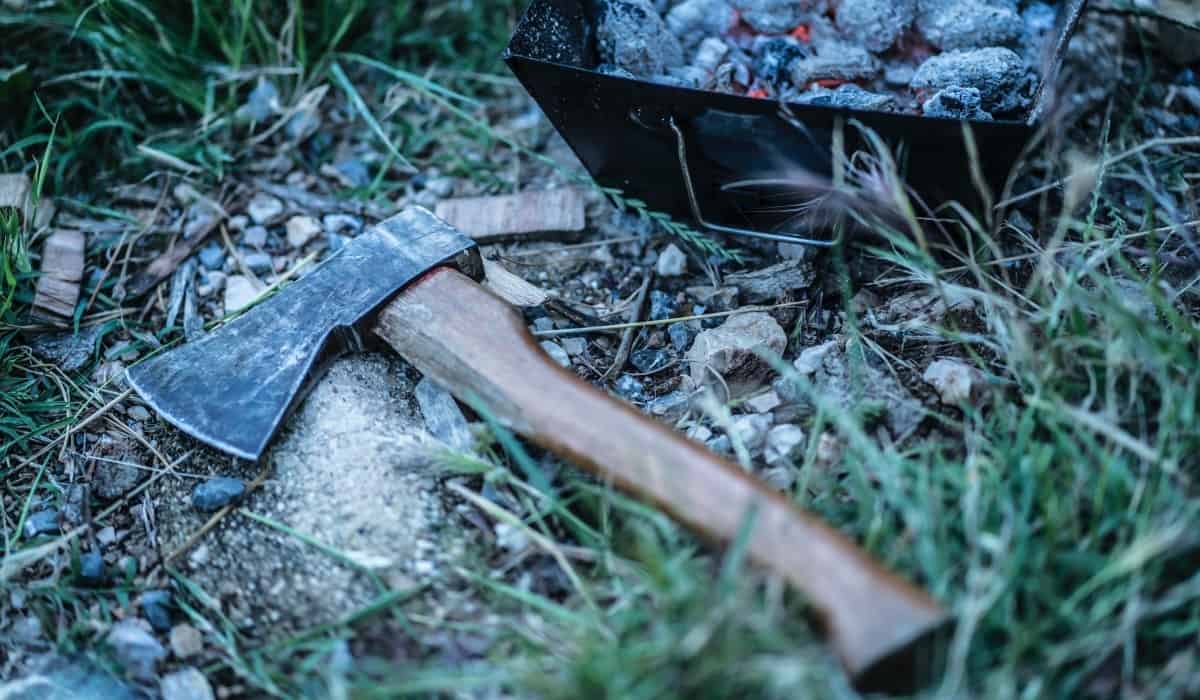
These types of axes are a smaller version of the felling axe. It’s small enough to be used with one hand, but can also be used with two-hand if more force is needed. The one-handed axe is also called a hatchet despite the difference in their bit shape, thickness, and poll. The terms one-hand axe and hatchet are being used interchangeably to refer to any small axes.
b. Tomahawks
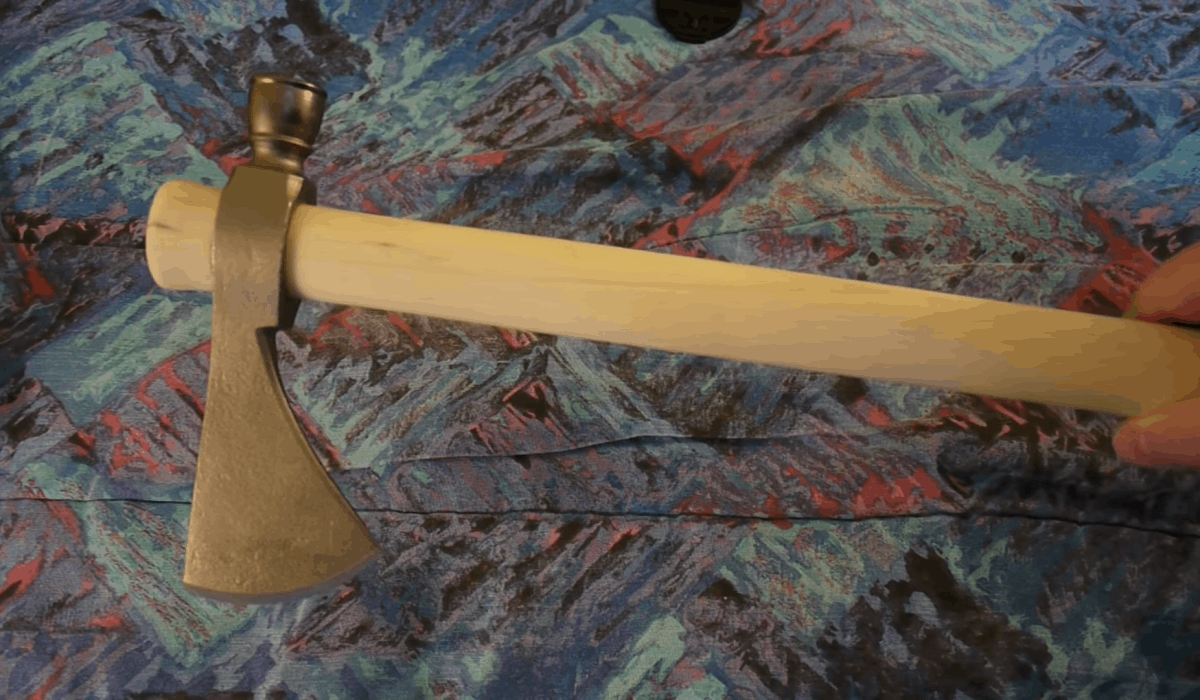
The tomahawk is another single-handed, general-purpose axe. Its eye is rounded, and the bit is inserted from the bottom of the haft. Unlike with regular axes, its handle becomes wider as it reaches the top part. The bit is held in place by the widened part of the handle, compared to other axes which are held by a splint.
The bit is held in place by the widening of the handle. Due to this, it is easier to replace a broken tomahawk haft, compared to an axe which needs a more detailed carving of the haft.
c. Survival/Tactical Axes
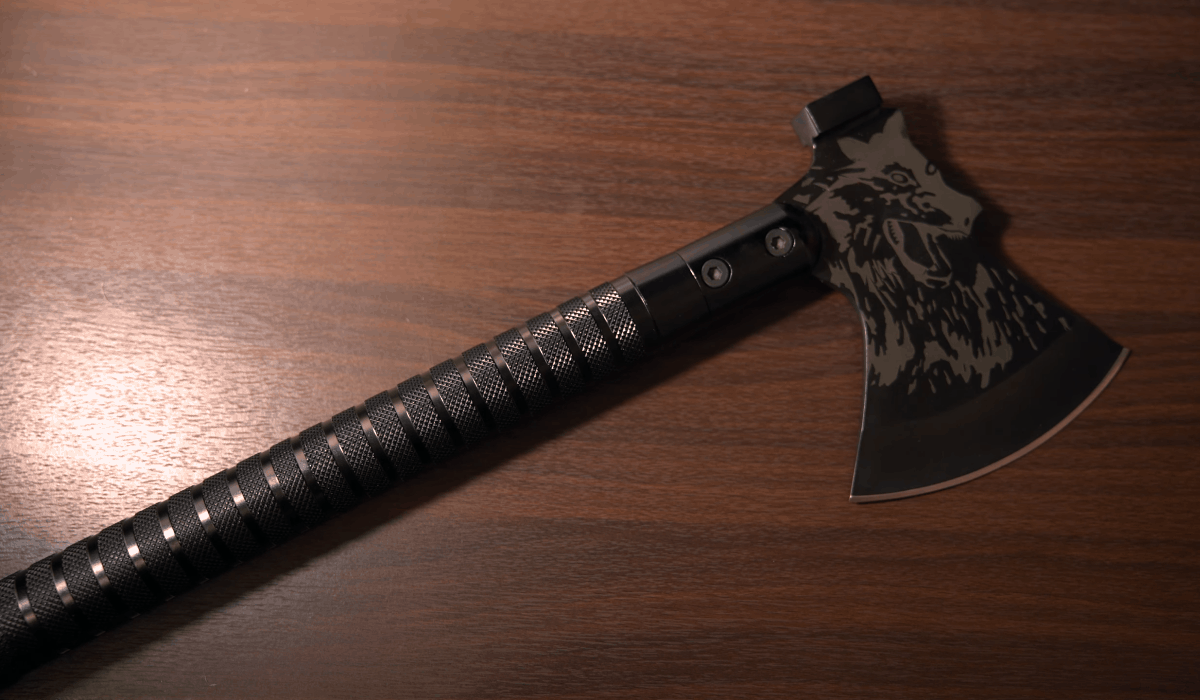
Survival and tactical axes are a modern breed of axes that have added tools built into it, or incorporated into its design. Some models come with ridges along their handle to be used as a saw. There are even those that have a swiss-knife tool hidden in a compartment in the handle.
Recommendations
The felling and splitting axes are undoubtedly irreplaceable and are superior to all other axes in terms of felling a tree and splitting logs. On the other hand, the multipurpose axes are versatile enough to be used for woodworking and can replace carpentry axes and survival knives. Knowing these, preppers should own one felling axe, one splitting axe and a one-handed multipurpose axe/hatchet.

